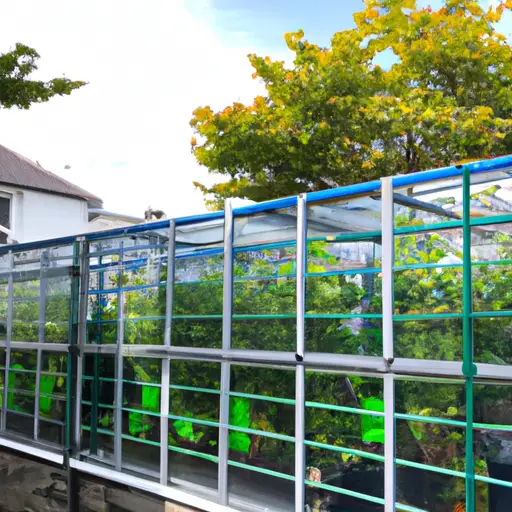Enriching Urban Living through Containerscapes and Greenery
Introduction
In today’s fast-paced urban environments, it is becoming increasingly important to create spaces that promote wellness and enhance the quality of life for city residents. As cities continue to grow, the need for green spaces is more critical than ever. Containerscapes, the practice of creating gardens and landscapes using containers, along with incorporating greenery into urban areas, offers a unique solution to this challenge. This article explores how containerscapes and greenery can enrich urban living by providing numerous benefits to individuals and communities.
1. Creating Urban Oases
Containerscapes offer an excellent way to transform underutilized spaces in cities into stunning urban oases. By utilizing containers of various shapes and sizes, these small-scale gardens can be created on rooftops, balconies, patios, or even in small pockets of land throughout a city. These green havens provide individuals with a tranquil escape from the bustling cityscape while reducing noise pollution and mitigating the heat island effect.
2. Enhancing Mental Health
The presence of green spaces has been proven to have numerous positive effects on mental health. Studies have shown that exposure to nature can reduce stress levels, improve mood and overall wellbeing. By incorporating greenery through containerscapes into urban areas, individuals can enjoy these benefits without having to travel long distances outside the city.
3. Promoting Physical Health
Containerscapes not only enhance mental health but also contribute significantly to physical well-being. Growing plants in containers encourages individuals to engage in physical activities such as gardening or even simple tasks like watering or pruning plants. These activities promote mobility, reduce sedentary lifestyles, and increase overall fitness levels among urban residents.
4. Improving Air Quality
Urban environments are often plagued with poor air quality due to high concentrations of pollutants emitted by vehicles and industries. However, by introducing greenery through containerscapes into cities, the air quality can be significantly improved. Plants act as natural air purifiers, removing harmful pollutants and releasing oxygen into the atmosphere. This practice can help mitigate the adverse effects of air pollution on public health.
5. Encouraging Biodiversity
Containerscapes not only benefit humans but also serve as habitats for various insects, birds, and other small animals. By incorporating a diverse range of plants in containers, urban dwellers can attract and support a wide array of wildlife, thus increasing biodiversity within cities. This not only adds beauty to urban areas but also promotes ecological balance and sustainability.
6. Fostering Community Engagement
Containerscapes provide an excellent platform for community engagement and social interaction within urban areas. Community gardens created through containerscapes bring people together, fostering a sense of belonging and shared responsibility for maintaining these green spaces. This collaboration allows individuals to connect with nature while building relationships with neighbors, thus creating stronger communities.
7. Boosting Economic Opportunities
The incorporation of containerscapes and greenery into urban areas also presents economic opportunities for individuals and communities. Nurseries specializing in container gardening can flourish by providing plants and expertise to those interested in creating their own green spaces. Additionally, urban farmers can grow vegetables or herbs in containers for local consumption or even to supply restaurants with fresh produce, further supporting local economies.
8. Mitigating Climate Change Effects
Green spaces created through containerscapes play a vital role in mitigating the effects of climate change in urban environments. Plants absorb carbon dioxide during photosynthesis, reducing greenhouse gas emissions and helping to combat global warming at a local level. Furthermore, the presence of vegetation within cities can help regulate temperature fluctuations by providing shade and cooling effects.
Conclusion
Enriching urban living through containerscapes and greenery offers numerous benefits for individuals and communities alike. These small-scale gardens contribute to mental and physical well-being while enhancing air quality, promoting biodiversity, and fostering community engagement. By investing in these sustainable practices, cities can create healthier and more vibrant environments for their residents, ultimately improving the overall quality of urban living.













